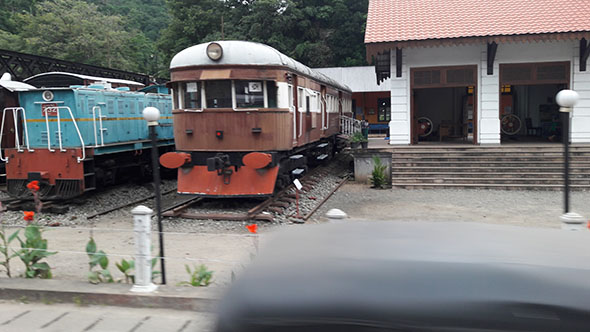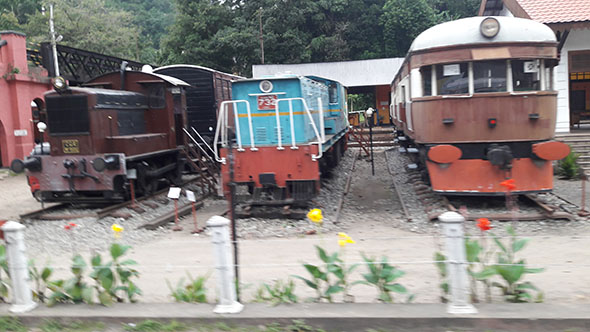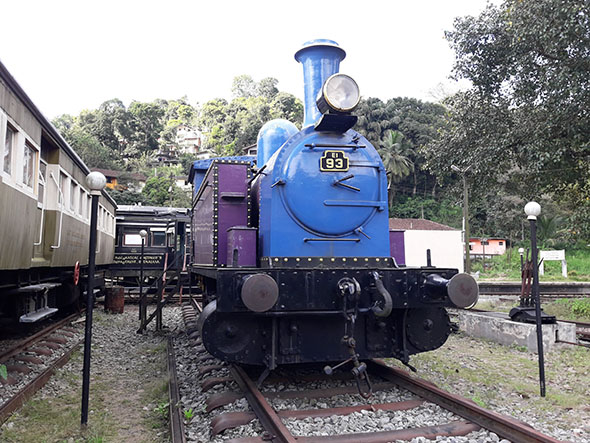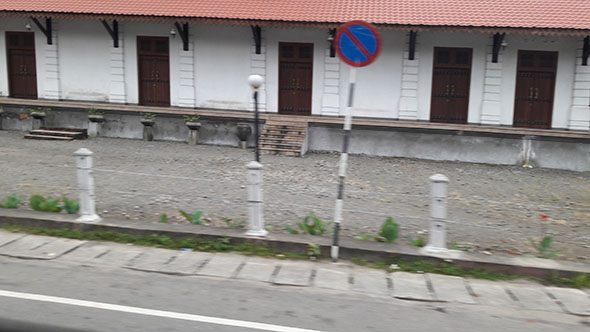National Railway Museum – reminiscence of yesteryear – By Arundathie Abeysinghe


National Railway Museum is situated adjacent to Kadugannawa* Railway Station between Balana and Pilimatalawa Railway Stations on the upcountry railway line about 515 meters above sea level.
The building of the Museum is divided into several halls. Among the items on display at the Museum are gas lamps, tablet machines, tools, rail cars, trolleys, machineries, ancient railway equipments, signs and railway memorabilia including a station sun dial which had been used since the beginning of Sri Lanka Railways (formerly Ceylon Government Railways – CGR). The Museum is situated adjacent to the platform of Kadugannawa Railway Station on the up-country railway line.
The Railway Museum also showcases a large collection of railway memorabilia including several diesel and steam engines, locomotives as well as diesel carriages that were used in Sri Lanka in the past. As steam power engines are not used at present, many people, especially children and youths have not seen them. These magnificent locomotives in the open air are a glimpse into the past when steam trains were a common sight in Sri Lanka, a contrast to the present day power-sets which run through Kadugannawa Railway Station on their way to Kandy and Badulla on the up country railway line.

The staff at the Museum provides a guided tour of the Museum and the tour is concluded with a video presentation of the history of Sri Lanka Railways inside a newly air conditioned wooden railway carriage with wooden seats.
Viewing the exhibits at the Museum including the old Tablet System that was used in Sri Lanka is important for students as well as the general public as this is the only place to view such items that belong to Sri Lanka Railways.
Access to the Museum is easy for train travelers as well as those travelling by road as the Museum is situated close to Colombo- Kandy Road at Kadugannawa.

Visitors can climb the railway carriages that are displayed outside the Museum to see old diesel engines, steam engines and railway carriages which were used in the past.
Steam and diesel locomotives which are on display adjacent to the Museum in the open air as if they are ready to run is a glimpse into the past when these locomotives were on the rail.
A visit to the Museum is of utmost importance for railway fans as well as the general public interested in observing these memorabilia of yesteryear.
As the Museum is situated next to Colombo – Kandy Road, those traveling by road can also see diesel and steam locomotives as well as old railway carriages without visiting the Museum. But to view the old equipments and machinery, it is necessary to visit the Museum.
National Railway Museum was opened on 27 December 2014 to commemorate the 150th anniversary of railway service in Sri Lanka.
The Museum is open daily from 9.00 a.m. – 4.00 p.m., except on *Poya Days.

Location: Kadugannawa Railway Station
- Poya Day – Poya is the name given to the Buddhist Full Moon Holiday known as “Uposatha” (Buddhist day of religious observance which was in existence from the Buddha’s period to date). There are 13 -14 Poya Days including Adhi (extra in Sinhala) Poya Day per annum. Adhi Poya Day is the second Poya Day of a month as in Adhi In Sri Lanka Poya Day is declared as a Public, Bank and Mercantile Holiday.
- Kadugannawa – Kadugannawa (about 106 kilometers from Colombo and about 15 kilometers from Kandy City) is situated on Colombo – Kandy Road. Kadugannawa is considered as the gateway to the hill country and can be reached by vehicle as well as by train.
- Sri Lanka’s rail network was introduced in 1864 by the British Colonial Government with the objective of transporting tea and coffee from the hill country to Colombo. Initially, a 54 kilometer railway line was built connecting Colombo and Ambepussa (about 65 kilometers from Colombo and about 55 kilometers from Kandy).








No Comments